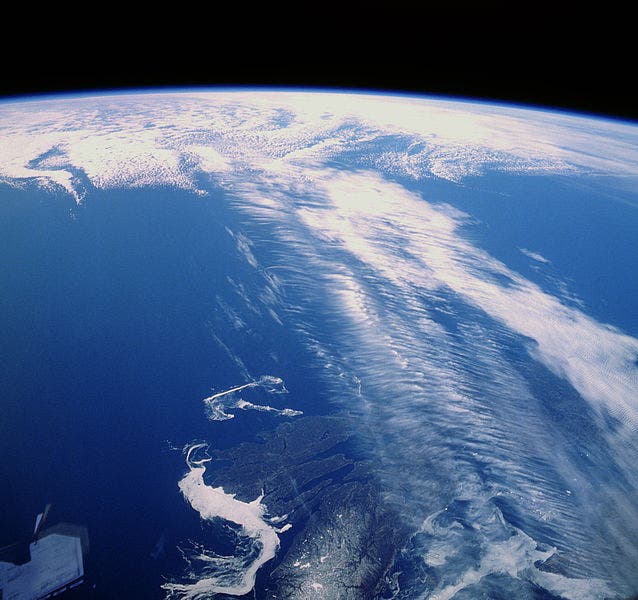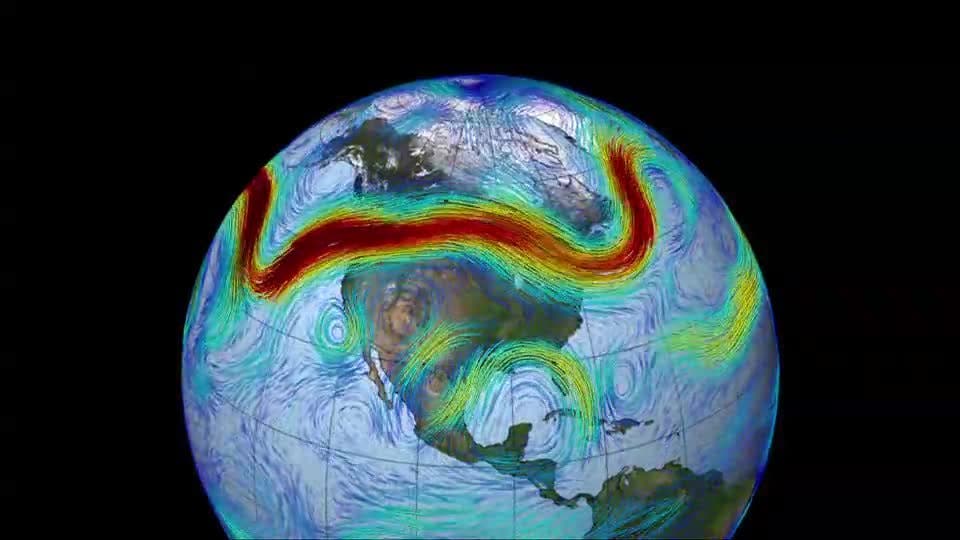A new computer model confirms that the warming Arctic produces strong winds and extreme weather in the northern hemisphere, where 90% of Earth’s population is living.

We often talk about climate change as if it’s a uniform thing, but the planetary average is not representative of all the places on Earth. Since 1901, the planet’s surface has warmed by 0.7–0.9° Celsius, but the Arctic area has warmed up almost twice as much, and Alaska and western Canada’s temperatures have risen by 3 to 4 °C.
At first glance, you might think that’s a good thing. After all, very few people live in the Arctic, and its ecosystem also isn’t particularly rich. However, what’s happening in the Arctic can have cascading effects on the rest of the planet. For instance, it means that snow and ice will melt at an accelerated pace, giving way to darker soil and water, which absorb even more solar energy and create a warming feedback loop. Melting ice also causes sea level rise, as well as the release of methane trapped in the Arctic permafrost. Also, a warming Arctic can mess up the global wind circulation, particularly something called the jet stream.
Jet streams are fast flowing, narrow, meandering air currents, typically marking the boundary between the cold polar air and the warmer air mass to the south. For decades, researchers have tried to assess the impact that climate change has on the Arctic jet stream, and the cascading effects this impact will have on local weather in the northern hemisphere.

In recent years, wind data shows that these jet streams increasingly faltering. They are also changing course, being less often parallel on the Equator, and instead, sweeping across different areas of the northern hemisphere. This does not only cause strong winds locally, but also injects cold Arctic air into lower latitudes, as was the case with the extreme cold that struck the Midwest of the USA in late January 2019. At the same time, a weakened jet stream can lead to prolonged heatwaves and drought, as was experienced in Europe in 2015 and 2018. In other words, although some politicians seem to have difficulties grasping this concept, climate change altering the jet stream can produce more extreme weather — both cold and warm.
However, while the general principle was clear, the observations did not exactly fit the existing climate models — until now. The breakthrough came when researchers incorporated ozone chemistry into their model using a new machine learning algorithm. When this was added to existing models, the results fit the observations perfectly.
“We’ve developed a machine learning algorithm that allows us to represent the ozone layer as an interactive element in the model, and in so doing, to reflect the interactions from the stratosphere and ozone layer,” says first author and atmospheric researcher Erik Romanowsky. “With the new model system we can now realistically reproduce the observed changes in the jet stream.”
The reason why ozone is important is that sea-ice retreat creates an area of ozone-amplified warming in the polar stratosphere. This warming is counterbalancing the frigid temperatures which act as the engine of the jet stream, essentially weakening these air currents.
In turn, this indicates that it’s not just the warming directly, but the loss of sea ice that’s causing changes in the jet stream.
“Our study shows that the changes in the jet stream are at least partly due to the loss of Arctic sea ice. If the ice cover continues to dwindle, we believe that both the frequency and intensity of the extreme weather events previously observed in the middle latitudes will increase,” says Prof Markus Rex, also an author of the study. “In addition, our findings confirm that the more frequently occurring cold phases in winter in the USA, Europe and Asia are by no means a contradiction to global warming; rather, they are a part of anthropogenic climate change.”
The study also represents an important technological achievement — the use of machine learning to substantially improve climate models and improve our understanding on the planet we live on.
Journal Reference: Romanowsky et al. The role of stratospheric ozone for Arctic-midlatitude linkages. Scientific Reports, 2019; 9 (1) DOI: 10.1038/s41598-019-43823-1






